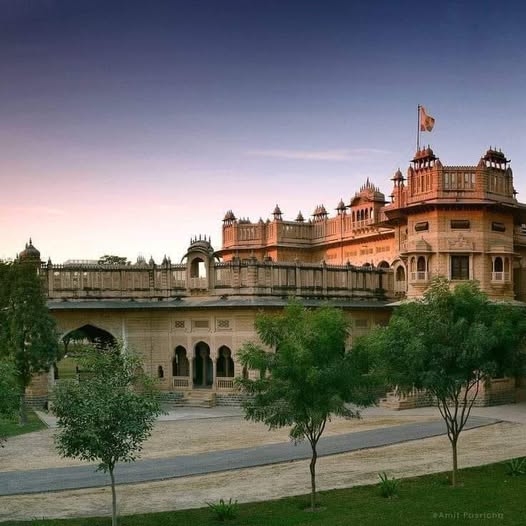Moti Mahal Palace: A Timeless Gem of India’s Royal Heritage

Moti Mahal Palace: A Timeless Gem of India’s Royal Heritage
India is home to numerous architectural marvels that stand as a testament to its royal past. One such magnificent structure is Moti Mahal Palace, a remarkable piece of history that reflects the grandeur and opulence of India’s erstwhile rulers. Whether you are a history enthusiast, an architecture lover, or simply someone who enjoys exploring historical landmarks, Moti Mahal Palace is a must-visit destination.
Historical Significance of Moti Mahal Palace
Moti Mahal, translating to the ‘Pearl Palace,’ is a stunning monument that once served as the residence of royal families. The rulers of India’s princely states built it as a symbol of power, authority, and refined taste. The palace played a crucial role in various political and social events, witnessing significant moments in history.
Over the years, multiple dynasties have ruled the palace, each leaving a distinct imprint on its structure and culture. The lavish halls, elegant corridors, and beautifully decorated rooms tell tales of a bygone era when kings and queens lived in splendor.
Architectural Marvel of Moti Mahal Palace
Moti Mahal Palace showcases breathtaking Indo-Islamic and Rajasthani architecture. Some of its defining features include:
- Grand Facade: Skilled artisans adorned the palace with intricate carvings, exquisite domes, and majestic pillars, showcasing the craftsmanship of the era.
- Ornate Interiors: The interiors boast vibrant frescoes, mirror work, and detailed paintings, depicting scenes from mythology and royal life.
- Sprawling Gardens: Lush gardens surround the palace, adding to its beauty and providing a serene escape from the hustle and bustle of city life.
- Massive Courtyards: The vast courtyards and open spaces hosted royal gatherings, ceremonies, and entertainment.
Every corner of Palace displays the artistic brilliance and cultural influences of its time.
Cultural and Heritage Importance
Moti Mahal Palace holds immense cultural significance beyond its architectural wonder. The palace served as a hub for art, music, and literature, where poets, musicians, and scholars gathered to discuss ideas and showcase their talents.
Many traditional festivals and events still take place in and around the palace, preserving the heritage. These festivities offer a glimpse into the royal lifestyle and allow visitors to experience the grandeur of the past.
Tourist Attractions and Nearby Places
Visiting Moti Mahal Palace is an enriching experience, as it lies in a historically rich city. Here are some must-visit attractions nearby:
- Heritage Museums: These museums house artifacts, paintings, and relics from the palace era, offering deep insights into history.
- Ancient Temples and Mosques: Nearby religious sites feature intricate carvings and historical importance.
- Local Markets: The vibrant local markets offer traditional handicrafts, textiles, and souvenirs that reflect the culture of the region.
- Lakes and Gardens: Scenic lakes or gardens near the palace enhance its charm and provide picturesque views.
Best Time to Visit Moti Mahal Palace
The best time to visit Moti Mahal Palace is during the winter months, from October to March. The pleasant weather enhances the experience, making sightseeing and exploring the palace grounds ideal. Avoid visiting during peak summer, as the scorching heat can make outdoor exploration uncomfortable.
How to Reach Moti Mahal Palace
Moti Mahal Palace connects well by road, rail, and air. Here’s how you can reach this historical site:
- By Air: The nearest airport lies in a major city, from where you can hire a cab or take local transport.
- By Train: Well-connected railway stations make it convenient for tourists to reach the palace.
- By Road: Buses, taxis, and private vehicles provide easy access to the palace from nearby cities and towns.
Preservation and Conservation Efforts
With increasing awareness about heritage conservation, authorities focus on preserving . Various government and private initiatives aim to restore the palace, maintain its original charm, and ensure it remains a key historical attraction for future generations.
Tourists should respect the monument, avoid littering, and follow preservation guidelines to help maintain its beauty and integrity.
Conclusion
Moti Mahal Palace stands as an enduring symbol of India’s rich cultural and architectural legacy. Whether its grandeur captivates you, its history intrigues you, or its beauty amazes you, a visit to this splendid palace is a journey through time. It reminds us of a glorious past, where art, culture, and royalty flourished in magnificent harmony.
If you love history and heritage, add Moti Mahal Palace to your travel bucket list and witness the timeless elegance of this extraordinary landmark.






